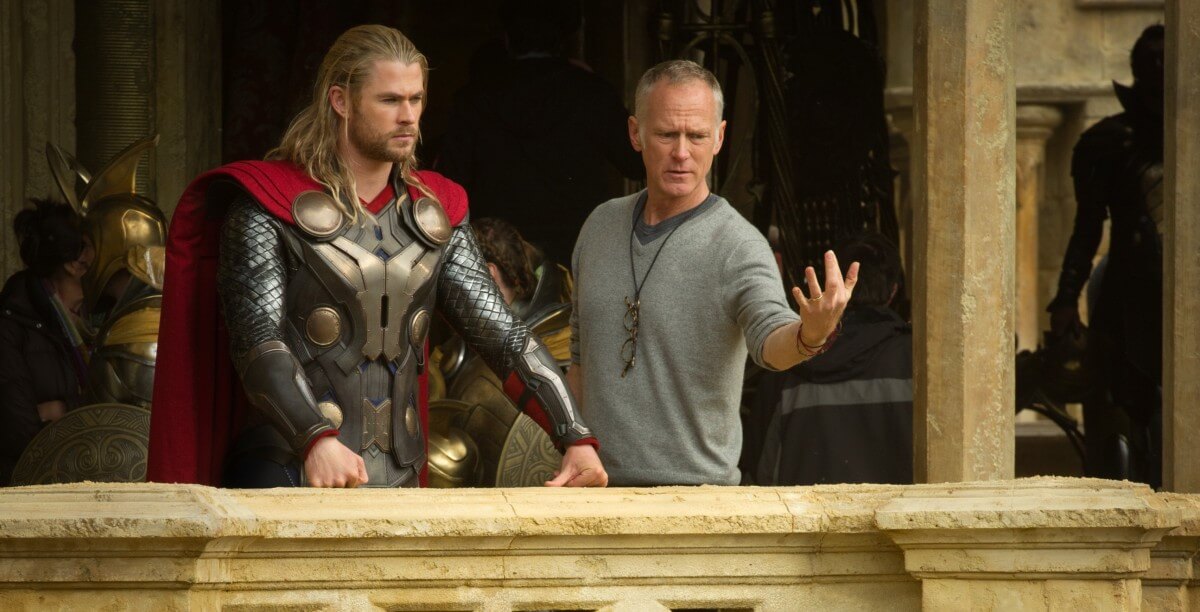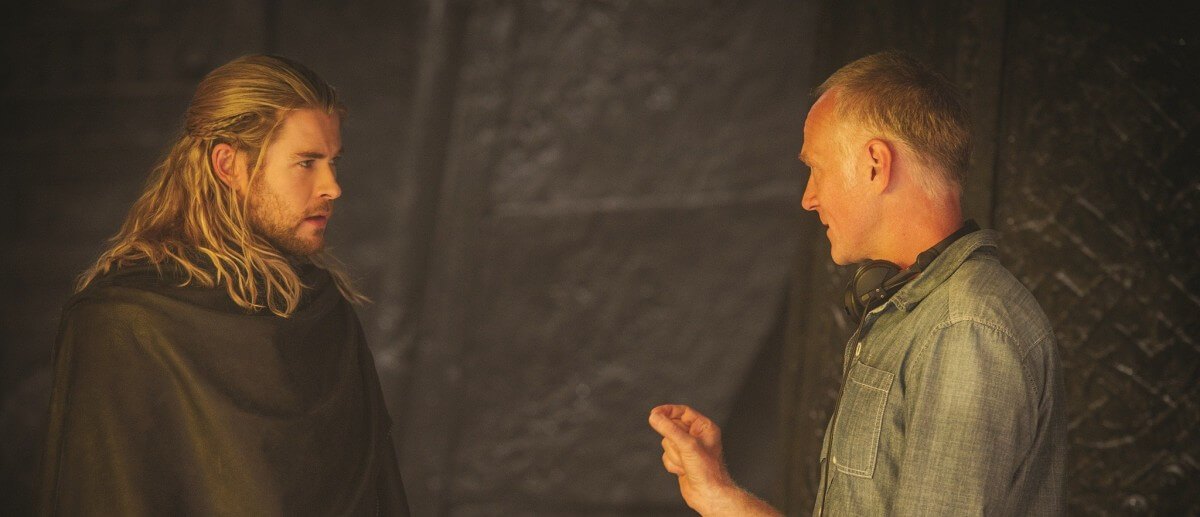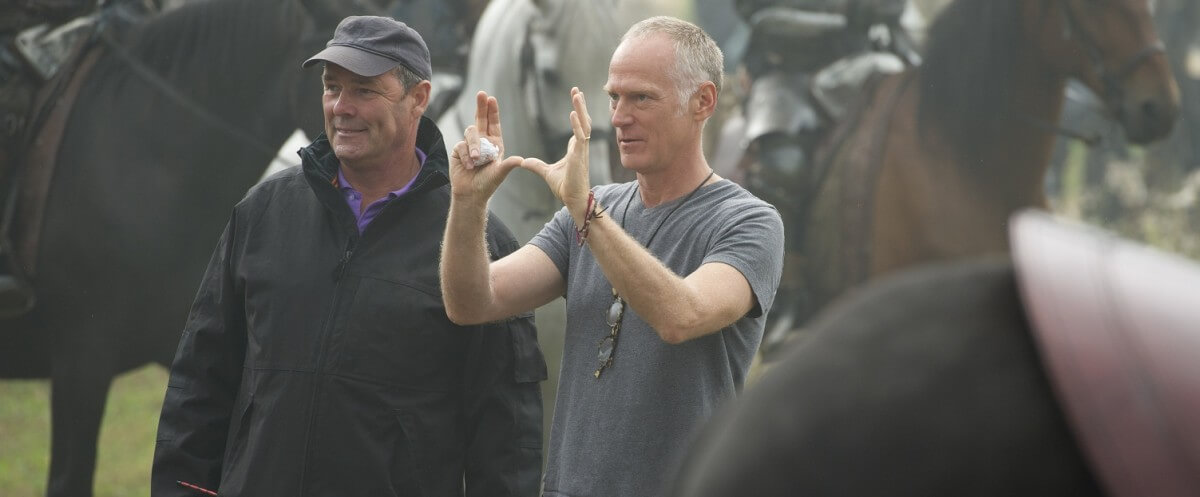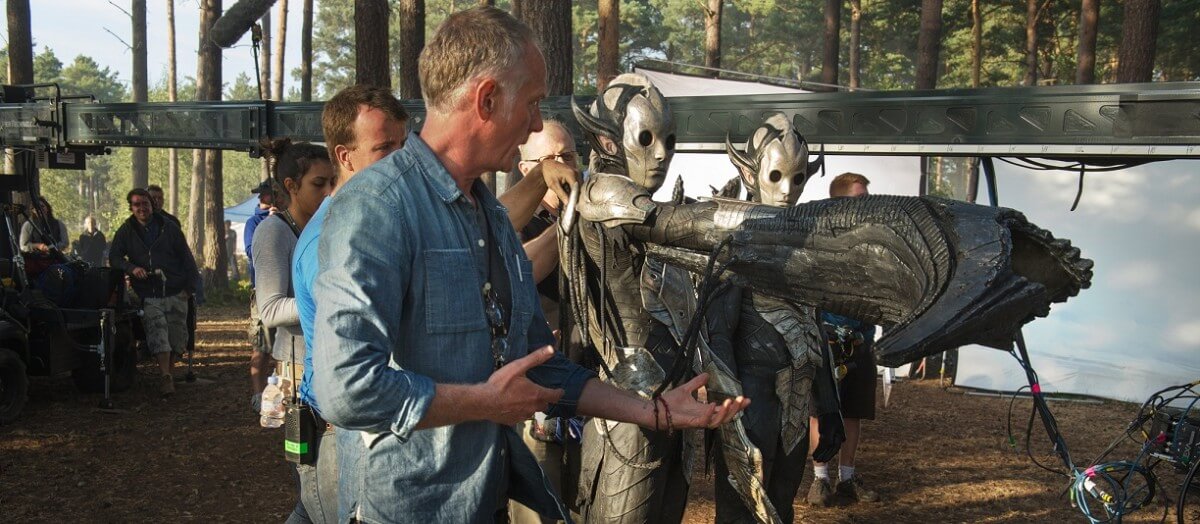Marvel’s Thor: The Dark World is coming out on DVD, blu ray and 3D on March 5th and to celebrate we have a great Q&A with the director Alan Taylor.
Q: What enticed you to take on the project?
A: When I was first approached about Marvel’s “Thor: The Dark World,” I thought they had made a mistake and were calling the wrong guy, because I was very ensconced in television. I was doing “Game of Thrones” at the time. Then the more I heard about it, once we got over the confusion, I realized it was me they were trying to talk to. I’ve never been a comic book guy. I didn’t grow up loving comics, so that sets me apart from a bunch of the people I’ve been working with. But I loved the scale of it.
I had come to love epic language; that’s something I got to experiment with in “Game of Thrones” and some other things that I’d been doing, so that was enticing. But I could say a million things. The cast that had been assembled on “Thor” by Kenneth Branagh was a dream cast and I welcomed the chance to work with people like that. I’d come to love having one foot in reality and one foot in fantasy. All of those things were coming together in this. Thor is a unique Super Hero because he carries so much weight of history and he carries a mythology. Those things gave him the kind of stature that I found exciting.
Q: How are you grounding this cosmic storyline?
A: A lot of the work we’ve been doing on “Thor: The Dark World” has been to try and ground it, and even though we are traveling nine realms in the universe, to never depart from it feeling real and emotionally connecting. So, it is partly the performances that we’re getting out of this amazing cast that make you actually relate to what’s going on, even when what’s going on is very strange. But also in the look of the film, we’re making a big effort to ground it in a sense of “history,” despite the fact that it is a made up world.
It was important to me that Asgard feel like it had been there for centuries, millennia even, that it has its own culture and that it really be a place that you could believe in. We had a new approach to the costumes, too, in the same way that carried through the texture of lived life and history.
Q: Was that part of the appeal, coming from “Game of Thrones”?
A: Having done “Game of Thrones” made me more relaxed about what I was going into, and I’m sure that was part of why they were willing to take a risk with me. The Marvel folks were fans of “Game of Thrones” and the challenge on that show was very much to make magic seem real and grounded, and not like never-never land. So there were some of the same challenges on this, but it’s obviously also a very, very different world.

Q: Please talk about what Chris Hemsworth brings to the role of Thor.
A: Chris Hemsworth was born to play this role. People say that about many characters and many actors, but I’ve never been so aware of it being true. To be a young man who carries the weight of godliness is challenging. Chris, besides being physically perfect, has a voice that carries such weight. He’s got such an amazing vocal instrument that you actually can believe that this young man has the stature of something that’s more than human. I’ve also been blown away by his acting; he’s not just a pretty face.
Q: Where do we find his character emotionally at the beginning of the film?
A: The Marvel movies, like most of the good Super Hero movies these days, are not just episodes; they actually are building the arc of a character that carries from one to the next. In “Thor” we saw him go from an impetuous prince to taking the first steps towards maturing and growing up. In our film that life story continues and he’s maturing, he’s moving closer to actually claiming the power that goes with Odin. He’s becoming not just a man but also a king potentially, and that’s a coming-of-age story but it’s also a kind of darkening, which is one reason why we have the title that we do. Our title is partly about the dark elves and the worlds that we go to, but I also thought that adulthood is kind of a dark world, and we see Thor mature and deepen, but he also has to give some things up and he has to suffer.
Q: Discuss the evolution of Thor and Jane’s relationship. Would you say that it’s the emotional core of the film?
A: There are times when you could certainly view the film and see it as being a love story about these people who have been kept apart and trying to contend with that and where their love fits into the universe. But there are other relationships that are incredibly powerful in the film too. It’s also a story about these two brothers, Thor and Loki. I think there’s a balance between which of those relationships is the most defining one of the movie. But the arc of the relationship with Jane carries from the first movie and is moved forward and completed in this one.

Q: Talk about Jane going through the “fish-out-of-water” story arc. How do you think people are going to react to her going to Asgard?
A: In the first story, people got a lot of joy out of the fish-out-of-water story of Thor coming to Earth and the natural thing to do seemed to be reverse it and take a human up to the Nine Realms and into Asgard. It’s sort of comedic, in the fish-out-of-water classic way, but it’s also one of the tones of the film because it’s wondering awe of what it would really be like to be able to set foot in a place like Asgard. So, Jane goes there and she actually becomes part of that community; you get to see her wear Asgardian clothing.
Q: What is Thor’s relationship with humans going to be like this time around?
A: I’m imagining that forever Thor’s story will be split between Asgard, the Nine Realms, and Earth. He has a real bond with Earth partly discovered through Jane, but in the classical mythology his mother was from Earth. We dispense with that in the Marvel Cinematic Universe, but there’s something about Thor where he’s really connected to Midgard [Earth] and will always be. Part of the challenge is to balance Thor’s godliness and the humanity we feel in him. So the story will always revolve tightly around Midgard, I think.
Q: What is his relationship with Loki? Was there a need to have him redeem himself?
A: We get to see Loki in a different light . When we started, we knew that Loki was going to be an important part of it because of the brother relationship that was created in the first film and is one of the main engines of the Thor movies. Tom [Hiddleston] has done such a great performance that we’ve always been aware of his vulnerability and the fact that he is evil. But there is a conflict in him, so now we get to see that other side of him emerge more fully.
Q: Where is Thor’s relationship with Odin in this film?
A: Odin is called the All Father but is one of the worst parents I have ever met! The two boys, Loki and Thor, are interesting because their father so completely screwed up their childhood. You don’t tell two boys that they’re both meant to be king but only one will actually be king. But in this film we see Odin’s character progressing as well. He’s lived for millennia but he’s getting on in years even in Asgardian terms. He’s starting to falter as a king and make some mistakes and he’s starting to react to things emotionally. In a way it’s an interesting inversion from the first movie where he was the rock solid man of principle and certainty and his son Thor was impetuous; in this one we start to see that Thor may be emerging as the stronger ruler in a way.

Q: Are you focusing on any particular runs from the comics? Will we see more Norse mythology?
A: When I first came into Marvel and was introduced to everybody, they delivered three tomes of the Thor universe on my desk, and I started thinking “Oh, God, that’s a lot of homework.” I started reading through them and by the time I got to the point where Loki was a woman and Thor was a frog, I realized that you can find almost anything in this comic mythology and it was okay to sort of push it aside and decide what movie we were making.
The later Thor imagery was the most compelling for me. Towards the end it really started developing a real richness and it felt like a saga; it felt like it had one foot firmly in Norse mythology. Trying to balance that with the wacky earlier stuff is one of the balancing challenges of any Thor movie. But for me, it’s pretty obvious that I responded mostly to the material that invoked the mythology.
Q: Do you prefer shooting in practical locations?
A: Yes! I love shooting on location. I lean away from shooting in green screen environments. We shot a scene with Tom Hiddleston, where he is on Svartalfheim, that we shot in Iceland. Later on shooting other scenes, we were lamenting the fact that we were in a parking lot with green screen and he was trying to conjure up the adrenaline he was feeling when the wind was in his hair and he could look at the vista and really be there. That’s the effect that practical locations have on actors; it’s a great way to work.
Q: What was the challenge in creating these different realms and species? They could be anything or look like anything.
A: The challenging part, but also the great fun, is creating these creatures and the worlds they come from. David Lynch was one of my favorite filmmakers and he had a quote once where he said that for him the future of filmmaking would not be so much about telling stories but more about creating worlds, and he’s always been a wonderful world creator, and that’s the part of it that appeals to me the most. So, having a chance to create not just Asgard but Vanaheim and Svartalfheim as well was great.
The names are hard to say but the worlds are wonderful to try and envision. We had to create a race of marauders, which are sort of all-purpose bad guys, and that was very collaborative. Our costume person was working on it; our concept artists were working on it. Marvel had very evolved ideas about what was appropriate. But the biggest challenge for the film was the Dark Elves and that’s the part that I feel happiest with and most proud of.
Partly you’re drawing on the comics but there’s a limit to what you pull from them. Malekith, in the comics, looks like a court jester at Carnival or a rock star or something. It was great in its world in its period but for us we had to find something darker and more threatening. So, finding Malekith’s look and finding the basic imagery of the Dark Elves was a really fun collaboration.

Q: How did you know that you nailed the look?
A: One of the things that drove it home and made it feel like we had done the right thing was when we first saw them in Iceland. They were walking on the black volcanic sand with some snowcapped peaks in the background and their costumes just felt like they were born in this place. It was great.
Q: Talk about Christopher Eccleston as Malekith and the character Kurse.
A: Our major villain for this is Malekith played by Christopher Eccleston. Thor is not just a Super Hero; he has the weight of history behind him. We needed a villain that had scale and was epic as well, so Malekith’s backstory goes back at least 5,000 years. He and his people have been gone for 5,000 years and they’re coming back, in their minds, to right a terrible wrong. They’re driven by vengeance. But Malekith is a noble creature and he’s committed to his purpose above all.
He’s sacrificed absolutely everything to achieve his end. Basically, all he wants is the universe. He is sort of an absolutist. We were inspired by various fanatics who plague our world right now; who believe there is no grey area. There is either absolute defeat or absolute victory and Malekith is bent on absolute victory. He is assisted by a very devoted lieutenant whose name is Algrim. Algrim is already powerful at the beginning of the story, but later on partway through, he transforms into a creature called Kurse who is sort of weaponized and unstoppable. The two of them drive the action.
Q: The Warriors Three…what are their roles this time around?
A: In “Thor” we met the Warriors Three, who are in the comics in a big way. Sometimes I think of them as the Warriors Four because Sif is also sort of an honorary member.
We thought it was important this time to make sure they weren’t grouped together as a kind of chorus, so that we got to know them each in specific ways. Maybe the strongest version of that was that we decided to go to Hogun’s home world and see the culture he comes from. That was part of making the characters feel alive and deep.
We also wanted to give them some time as actual serious warriors. There are some comic moments that come with them too, which are important, but we wanted to see just how lethal they can be and get into their characters a little more. Seeing Volstagg’s family and pursuing the relationship a little bit with Sif and Thor was important to us too. Basically, each of the Warriors “Four” gets time on screen where it is just about them.
Q: What was your experience like working with Marvel on a film with such scope and scale?
A: Coming in, I thought the effect would be daunting and overwhelming, but the Marvel experience was not what I expected. Marvel is unique. When you make the decisions, you’re making them with filmmakers who are really excited about the characters and the worlds, so in a way it feels like a very intimate creative process.

